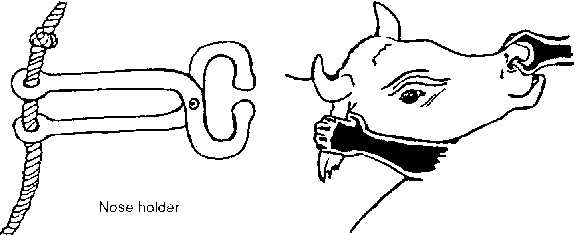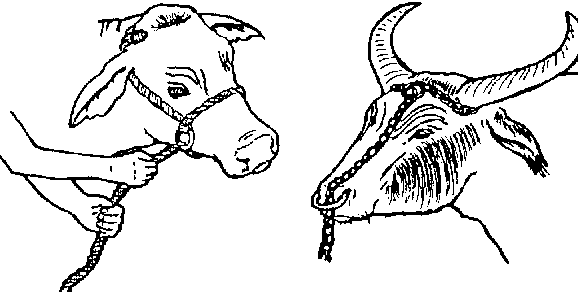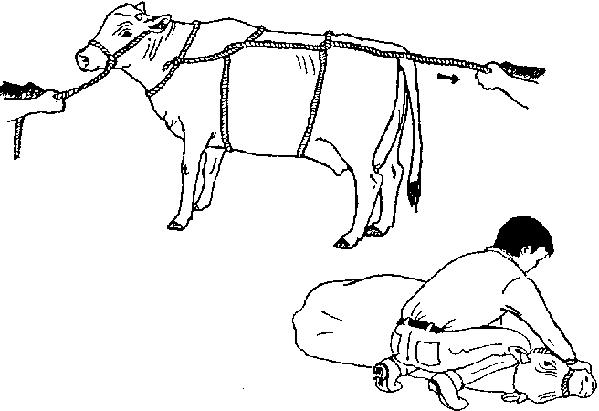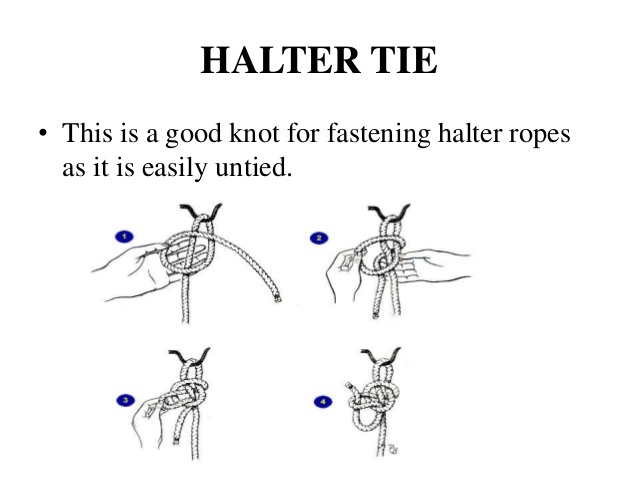Restraining (controlling) Large Ruminants
The crush or race is made of wood or metal. Crushes are used for large ruminants when they are vaccinated, examined or undergo other treatments.
How to Hold Animals
If you do not have a halter or a nose holder the best way to hold a large ruminant is to take a firm grip of the nostril using the thumb and forefinger of one hand while holding the horn or the ear with the other hand.

Haltering Large Ruminants
Animals need to be halter-trained and this is best done when they are young so that they are accustomed to the halter. When a halter is used on an animal talk to the animal to encourage it to move. Hold the halter no more than 20 cm from the animal’s cheek and walk close to its neck.

Casting or Throwing Cattle
If you do not have a crush and you want to trim the hooves of an animal, it will be necessary for you to cast (throw down) the animal.
To do this you will need:
- A halter for the head.
- Two people to help you.
- Ten to twelve metres of strong rope.
- A place where it is safe to throw the animal, where the soil is soft or covered with straw.
First halter the animal then tie the long rope around it as shown in the illustration below. Have one person hold the halter while the other joins you and pulls the rope. The animal will collapse onto the floor and your helper must immediately put his knee on its neck and his hand on the animal's head to prevent it from rising.
Do not leave the animal down for a long time as bloat may develop.

Remember when casting animals both the animal and people can get injured so try to do it safely.
In areas where animals are handled, illumination should be uniform and diffuse. Shadows and bright spots should be minimized. Slats on the floor of shearing sheds and other animal facilities should be eliminated so animals walk across the slats. Flapping objects or a coat hung on a chute fence may stop animal movement.
Pigs, sheep, and cattle have a tendency to move from a dimly illuminated area to a more brightly illuminated area, provided the light is not glaring in their eyes. A spotlight directed onto a ramp or other apparatus will often facilitate entry. The light must not shine directly into the eyes of approaching animals.
Livestock has colour perception. Numerous investigators have now confirmed that cattle, pigs, sheep and goats all possess colour vision. Handling facilities should be painted one uniform colour. All species of livestock are more likely to baulk at a sudden change in colour or texture.
In facilities where livestock is handled, loud or novel noises should be avoided because they distress livestock.
The sound of hanging metal can cause baulking and agitation. Rubber stops on gates and squeezing chutes will help reduce noise.
Click here to view a video that explains cattle restraint methods.
